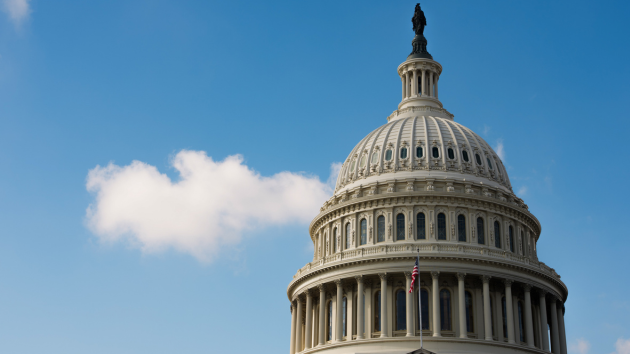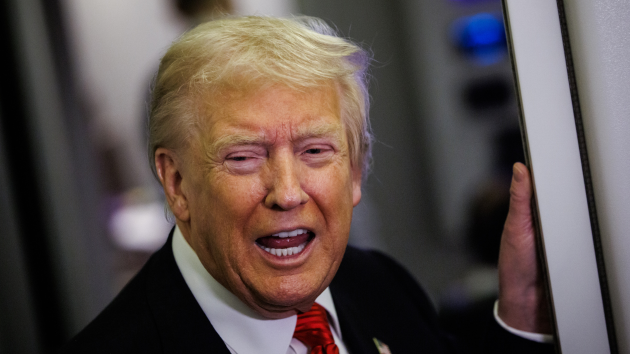Government shutdown becomes longest in history: How we got here and what’s next
Written by ABC Audio ALL RIGHTS RESERVED on November 5, 2025

(WASHINGTON) — The government shutdown on Wednesday entered its 36th day, officially becoming the longest shutdown in U.S. history.
That means the two longest shutdowns in American politics have occurred under President Donald Trump, with the previous 35-day record having been set during his first term in 2019.
There’s been little movement on Capitol Hill over the past five weeks as Republicans and Democrats blame one another for the stalemate. Democrats are keeping up their demand for an extension of Affordable Care Act subsidies, while Trump and Republicans say they won’t negotiate until the government is reopened.
Meanwhile, the impact on Americans is growing more painful by the day.
The 42 million Americans who rely on Supplemental Nutrition Assistance Program (SNAP) benefits are left vulnerable after funding lapsed and the administration committed to only partial payments.
ACA recipients saw their health insurance premiums spike as open enrollment began on Nov. 1, in some cases as much as 300%.
Airports across the country are experiencing delays amid staffing shortages, with thousands of air traffic controllers working without pay. Transportation Secretary Sean Duffy warned “mass chaos” could be in store and some airspace might have to be closed if the shutdown continues.
How we got here
Here are key moments from the shutdown so far.
Oct. 1: The federal government shut down at 12:01 a.m. after Republican and Democratic proposals that would have funded the government failed in the Senate at the eleventh hour. The Democrat bill included extensions for health care subsidies under the ACA while the Republican bill would have funded the government at current levels until Nov. 1.
Oct. 10: The Trump administration begins to layoff thousands of federal workers. Agencies impacted include the Commerce, Education, Energy, Health and Human Services, Housing and Urban Development, Homeland Security and Treasury departments. Among those fired are substance abuse and mental health services employees, special education staff and more.
Oct. 14: Two weeks into the shutdown with virtually no progress, House Speaker Mike Johnson predicts they are headed toward “one of the longest shutdowns in American history.” The House has remained out of session the entire shutdown after Republican members passed a clean, seven-week funding bill in mid-September.
Oct. 15: The Pentagon says that troops have been paid and will not miss a paycheck due to the shutdown. The military did this by moving $8 billion from existing funds.
Oct. 24: More than 500,000 federal employees miss their first full paycheck. Just days later, the president of the country’s largest union representing federal workers called on lawmakers to pass a short-term spending bill to end the shutdown, a statement seized on by Republicans to ramp up pressure on Democrats.
Oct. 30: President Trump, back from a weeklong trip to Asia, reinserts himself in the shutdown drama by calling on Senate Republicans to eliminate the filibuster and unilaterally reopen the government. But his call is quickly rebuffed by Senate Majority Leader John Thune.
Nov. 1: Funds run dry for SNAP benefits, leaving 42 million Americans vulnerable. (The Trump administration, after being ordered to do so by a federal judge, later says it will dip into contingency funds for benefits but those payments will only be partial ones.) Plus, open enrollment begins for Affordable Care Act recipients with prices for insurance premiums skyrocketing next year.
Nov. 4: The Senate fails for the 14th time to advance a clean, short-term funding bill. The record is tied for longest-shutdown in history.
What’s next?
A major question going forward is whether Trump will get more personally involved in trying to bring the shutdown to an end.
White House press secretary Karoline Leavitt, asked that question on Tuesday, said Trump’s “making his position on it quite clear” as she reiterated his call for Republicans to nuke the filibuster. Thune has said he doesn’t believe enough Senate Republicans will go for changing the traditional Senate rule.
All Senate Republicans have been invited to the White House for a breakfast tomorrow morning, a White House official and two Congressional aides confirmed to ABC News.
Behind the scenes, a small bipartisan group of rank-and-file senators are in conversation to try to find a way out of this shutdown. Some Senate Republicans told ABC News Senior Political Correspondent Rachel Scott they believed they could get some more moderate Democrats to their side after Tuesday’s elections — though Senate Democrats haven’t said as much.
The talking points made by leaders all shutdown long continued on Tuesday.
Senate Minority Leader Chuck Schumer, in floor remarks on Tuesday, said there deserves to be a “serious negotiation” on health care and that Democrats “are going to keep pushing to get these tax credits extended.”
Thune said he hopes this is the week that Democrats “come to their senses” and vote to reopen the government. The Senate leader said he was “still at a loss as to what it is exactly they’re trying to get out of this.”
In the meantime, the clock is running out on the short-term funding measure that was passed by the House and put up 14 times by the Senate, as it would only fund the government until Nov. 21. Thune has said the date would have to be changed, adding in a new question of what the new date would be.
Copyright © 2025, ABC Audio. All rights reserved.





